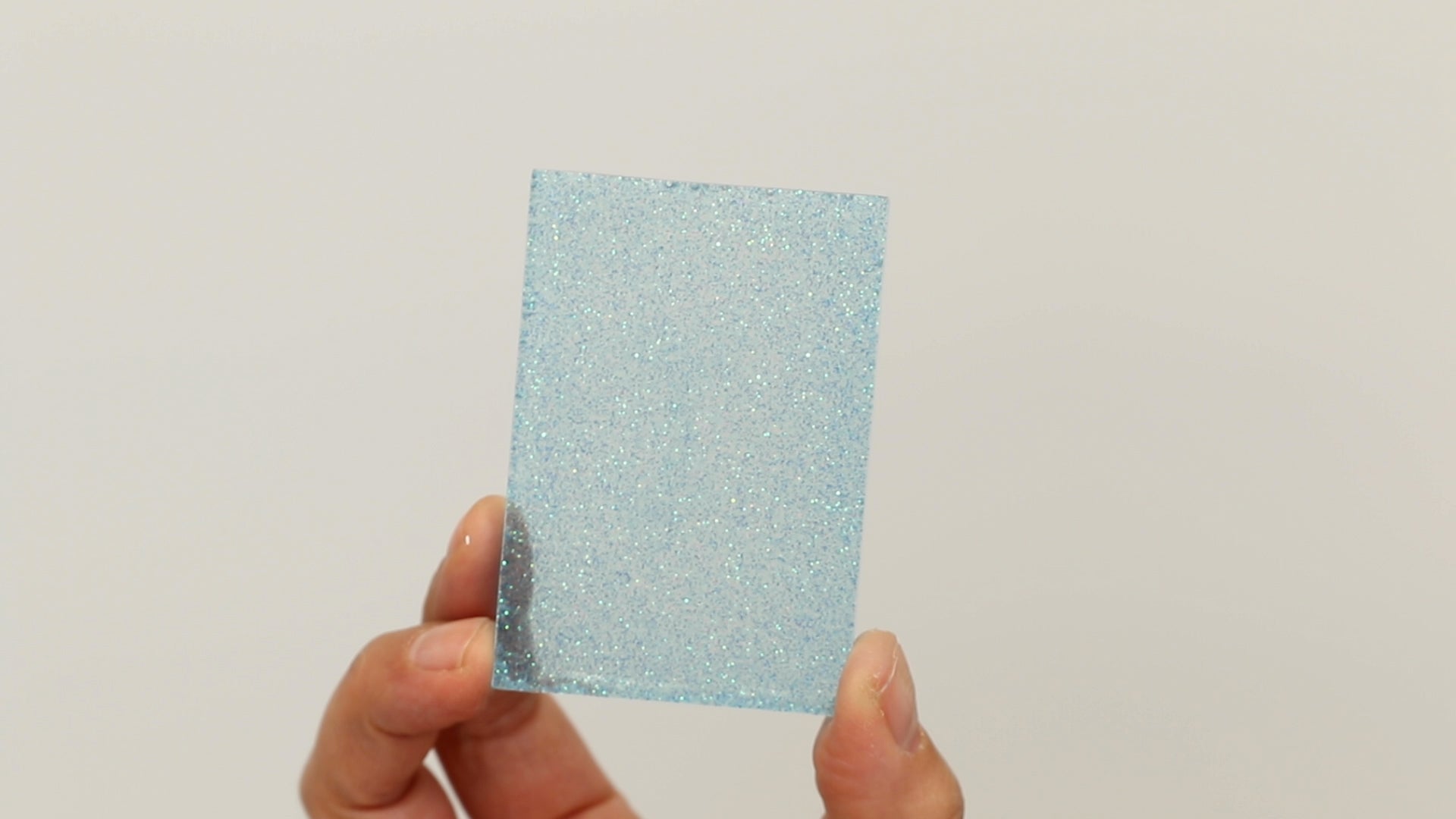You can use a variety of materials to color clear epoxy resin, however each material has advantages and disadvantages you'll want to be aware of.
ArtResin is a water-clear formula that is used to coat paintings, photos, wood, puzzles, etc. But you can use ArtResin for so much more than just clear coating artwork. ArtResin looks beautiful when it's tinted and by adding color to clear epoxy resin, you can create colorful flow art, ocean art, geode art, petri dish art, jewelry from silicone molds, and the list goes on.
We're going through the most common resin colorants and sharing which ones work well and, more importantly, which ones don't work at all. We're also going through a few guidelines that apply to all colorants and providing plenty of tips along the way.
Let's get started!
1. Why Is ResinTint The Best Colorant For Resin?
ResinTint was crafted specifically as a resin colorant. It mixes seamlessly into ArtResin, preserving its glossiness and, because it's so highly pigmented, a little goes a long way.
ResinTint is non-toxic and non-flammable. This means that ArtResin's non-toxicity and non-flammability is preserved once ResinTint is added to it.
Keep in mind that ResinTint requires epoxy resin as a binder: it's not meant to be used on its own and, when you add it into the resin, make sure you mix it really well so that both parts are properly emulsified.

2. Can You Use Alcohol Ink In Resin?
Alcohol ink is a super popular resin colorant that offers gorgeous, rich saturation.
Alcohol breaks down resin, which is why it's so effective at cleaning off sticky resin tools and why it's the only colorant that can create resin petri dish art. In petri dish art, the alcohol in the ink breaks down the resin as the drops move their way through, creating cool tendrils and squiggles that are seemingly petrified in place. This effect is amplified all the more with the use of ArtResin Ink Sinker.

Is it possible to use alcohol ink simply to tint resin? Yes, it is, but it's important to remember a couple of things:
-
Alcohol is flammable: while ArtResin is non-flammable on its own in its liquid state, this is not the case once alcohol ink is added in. For that reason, never use a flame torch on resin that contains alcohol ink.
- Alcohol is a solvent: adding alcohol ink to ArtResin will compromise ArtResin's non-toxicity and food safety compliance. If you wish to use alcohol ink on a piece that is intended for use as a food contact surface, pour a layer of clear, non-tinted ArtResin as a final top coat.


3. Can You Mix Acrylic Paint In Resin?
Yes, you can. In fact, acrylic paint is one of the most common colorants used to tint epoxy resin. On the plus side, acrylic paint is inexpensive, readily available, and it comes in a huge variety of color options.


4. Can You Add Mica Powder To Resin?
Yes, mica powder and powdered pigments are really popular additions to resin, especially for geode art. You need to mix mica powder in thoroughly, or the powder may not dissolve and you could end up with a grainy look to your resin. 

The metallics in Mica powder provide a rich, luxurious pearlescent effect but the metallic pigments can sink to the bottom and you could lose that beautiful, swirled look. If you want to keep the swirls, try pouring the metallics last, on top of a cured layer of resin. 
5. Can You Color Resin With Glitter?
Glitter is a really popular addition to resin. It doesn't tint the resin, but it certainly adds a colorful effect. Glitter is available in a wide variety of colors and sizes - be aware that larger glitter can be heavier and can sink down to the bottom of the resin. 


What Colorants Should You Not Add To Epoxy Resin?
There are various resin colorants that we don't recommend for tinting resin including oil paint, watercolor paint, latex paint, spray paint, nail polish, ground up chalk, spices like paprika and turmeric and food coloring.
6. Can You Use Eyeshadow To Color Epoxy Resin?
Pressed powder make-up, like eyeshadow, contains binding agents to hold it together, making it difficult for the make-up to dissolve; it ends up not mixing in properly and leaves specks throughout the resin. You can use loose make-up pigment but these can be costly - you're better off using mica powder.

7. Can Ground Chalk Be Used To Color Resin?
Ground up chalk is too coarse to dissolve well. Ground up chalk tends to clump up in the resin, leaving a grainy look with large specks.

8. Can I Color Resin With Spices Like Paprika and Turmeric?
Ground spices are not fine enough and don't dissolve well in epoxy resin, leaving you with a grainy looking cure. Additionally, although turmeric, paprika and other spices may provide initial color, it will fade very quickly. 



9. Can You Use Food Coloring In Resin?
Food coloring can provide a good result initially, so it makes sense to think it would make an ideal resin colorant. Unfortunately, this is not the case. Food coloring is not light fast and the color will fade very quickly. 

10. Can You Mix Oil Paint With Epoxy?
Oil paint does not blend well into epoxy resin, leaving you with a stringy mess. Once cured, there are visible clumps of paint that didn't mix, divots and an oily film on the resin surface.

11. Can You Use Watercolor Paint To Tint Resin?
Watercolor paint does not mix well with resin. It leaves specks throughout the cured resin and divots on the surface.


12. Can You Use Latex Paint To Color Epoxy Resin?
Latex paint is not an effective resin colorant. It's water based and very fluid, which causes the resin to get thick and slimy, resulting in a weird cure. It also takes away from ArtResin's glossiness and leaves the resin with a dull finish.

13. Can You Use Nail Polish Or Spray Paint To Color Resin?
We don't recommend tinting epoxy resin with anything solvent based like nail polish or spray paint. Most importantly, it's flammable, but it also provides a poor result: the color is not deep and it does not mix well into the resin, leaving specks of color throughout. 

14. What Materials Can I Add To Epoxy Resin?
Your best bet is to use a highly pigmented colorant designed specifically for use with epoxy resin. It's important to note that whenever you're adding anything into the ArtResin formula, do a sample test first to ensure the products are compatible and so you'll know exactly what results to expect. The most popular additions for epoxy resin include:
- Tints and colorants made specifically for resin
- Alcohol ink
- Acrylic paints
- Powdered pigments and mica powders
- Glitter
- Gold or metallic leaf
- Pressed or artificial flowers
- Colorful inclusions such as beads, glass, shells, charms etc
15. How Much Color Should I Add To Epoxy Resin?
Do not add more than 6% colorant to the total volume of ArtResin or the resin may not cure properly. For example, if you have 100 ml of resin (made up of 50 ml each of resin and hardener) don't add more than 6 ml of colorant. 
Typically, a small amount of colorant goes a long way. It's best to start with less and add more as needed. Use a highly pigmented colorant so you don't need to use as much. If you're unsure if you need more pigment, you can always test the saturation by bringing a little of the colorant up the side of your mixing cup.
16. When Can I Add Color To Epoxy Resin?
It's important to measure and mix the resin and hardener first before adding any colorant. Once the resin and hardener are combined, add the colorant of your choice, ensuring you don't exceed 6% of the total combined volume of resin and hardener, and mixing it well to ensure it is thoroughly blended. If you add the colorant to the resin or hardener on its own, it may throw off the 1:1 mixing ratio needed for the resin to cure properly.
17. How Do You Keep Resin Colors From Blending?
When pouring flow art or ocean art, the tinted resin can sometimes blend together and create a muddy mess. Many artists like to allow the tinted resin to thicken up a bit before pouring to provide control over the flow and prevent the colors from running into each other:
• Portion it out into smaller cups, one per color.
• Add colorant and mix well.
• Allow the resin to sit for about 15 minutes to slightly thicken up.
• Pour the tinted resin. If desired, you can leave a small gap between each color so that it has room to spread, especially if you plan on using a hair dryer to create lacing.



18. How Do You Prevent Alcohol Ink From Spreading In Resin?
When making petri dish art, prevent the alcohol ink from uncontrolled spreading over the surface with a simple tip: allow the resin to thicken up a bit before you add the colorant.
Pour the resin into the coaster molds and allow it to sit for about 20 minutes before you drop in the alcohol ink. Because the resin will have thickened up a little bit, you'll find the ink won't spread as easily, giving you far more control over and even allowing you to create negative space.
19. Are Resin Colorants Toxic?
Not all colorants are non-toxic and some can even contain solvents - adding colorants such as these will alter ArtResin's non-toxicity, non-flammability and compromise its food safety designation. Choose a non-toxic and non-flammable colorant such as ResinTint to keep yourself safe.
💡TIP: If you would like to use tinted resin on a charcuterie board or serving tray that may come into contact with food and you're not sure if your colorant is safe, err on the side of caution and apply a layer of clear, non-tinted ArtResin as a final top coat.
_________________________________________________________________________
To recap, there are lots of resin colorants you can use to tint epoxy resin, but no matter which one you use, there are a few important things to remember:
- Always do a sample test so you know exactly what to expect and to ensure the resin and the colorant are compatible.
- Always add less colorant than you think you need; you can always add more.
- Observe the 6% rule - that is, don't add more than 6% of the total combined volume of resin and hardener.
- Be aware that certain colorants can alter ArtResin's non-toxicity, non-flammability and food safety designations.
_________________________________________________________________________
We hope you found this information useful. If we missed your favorite colorant, please leave it in the comments below!
Interested in using silicone oil with your resin? Once again, there are advantages and disadvantages… and we have a whole blog dedicated to it ;)
Learn more about the different types of epoxy resin and their uses, and explore our guides on coloring epoxy resin:
ArtResin: The Original Epoxy For Resin Art.





